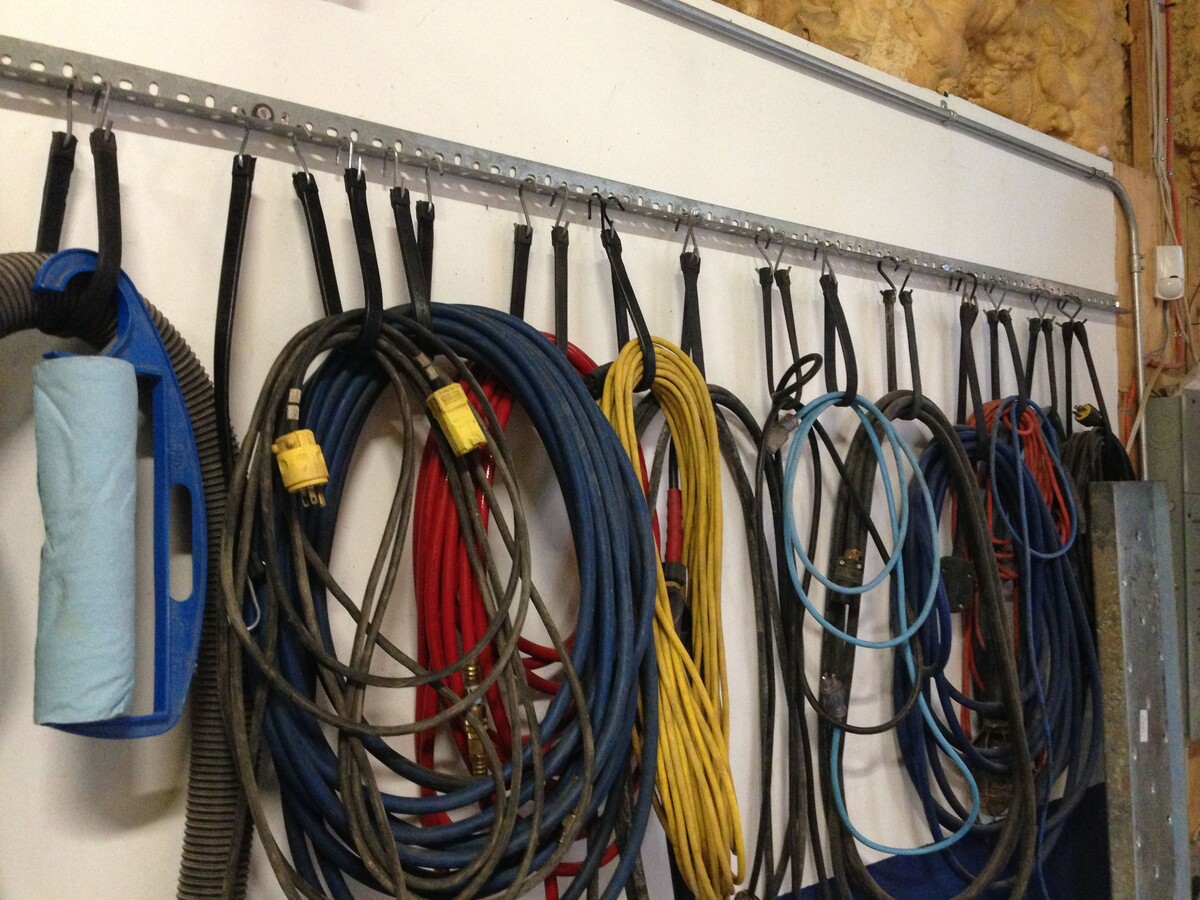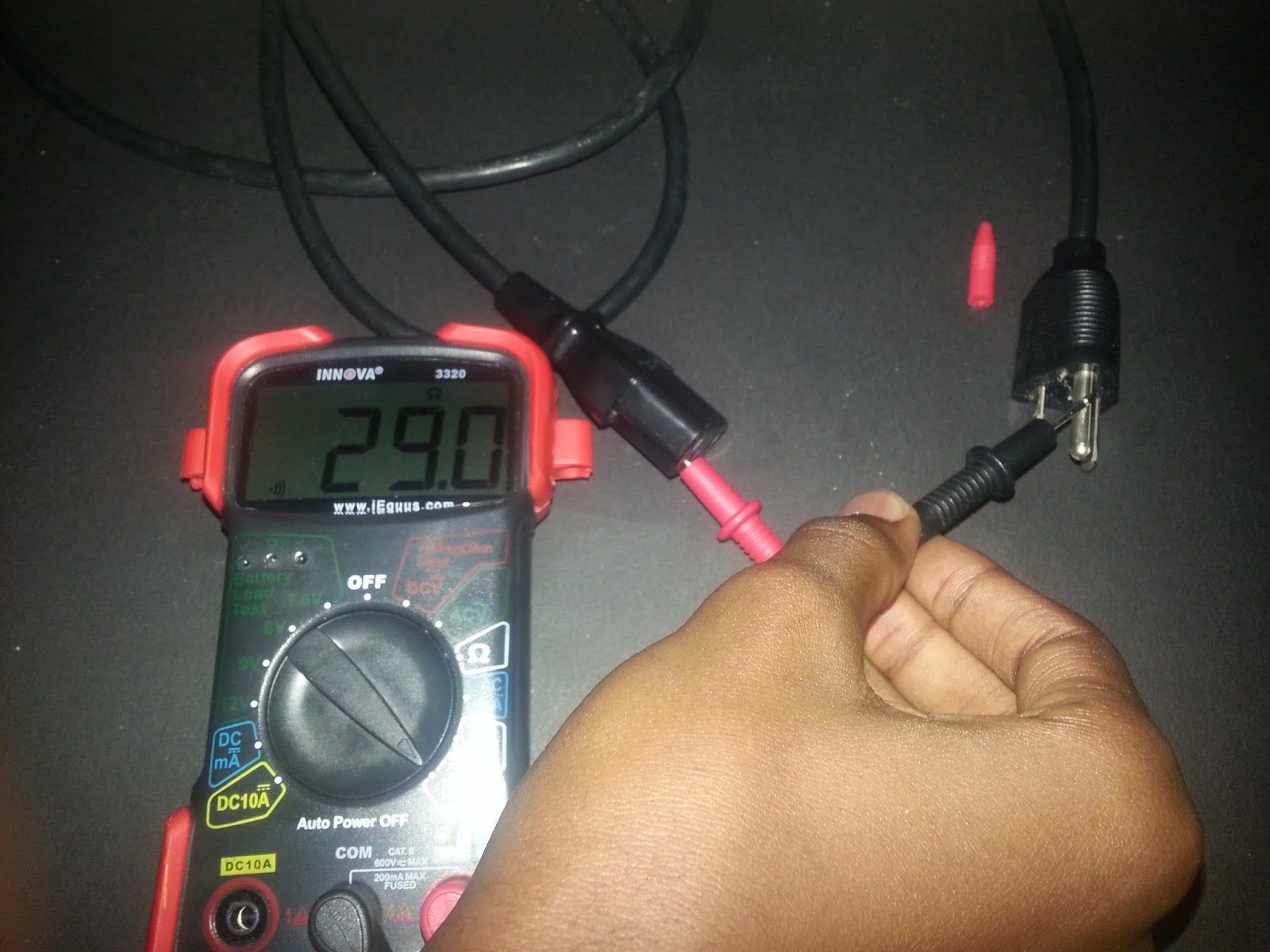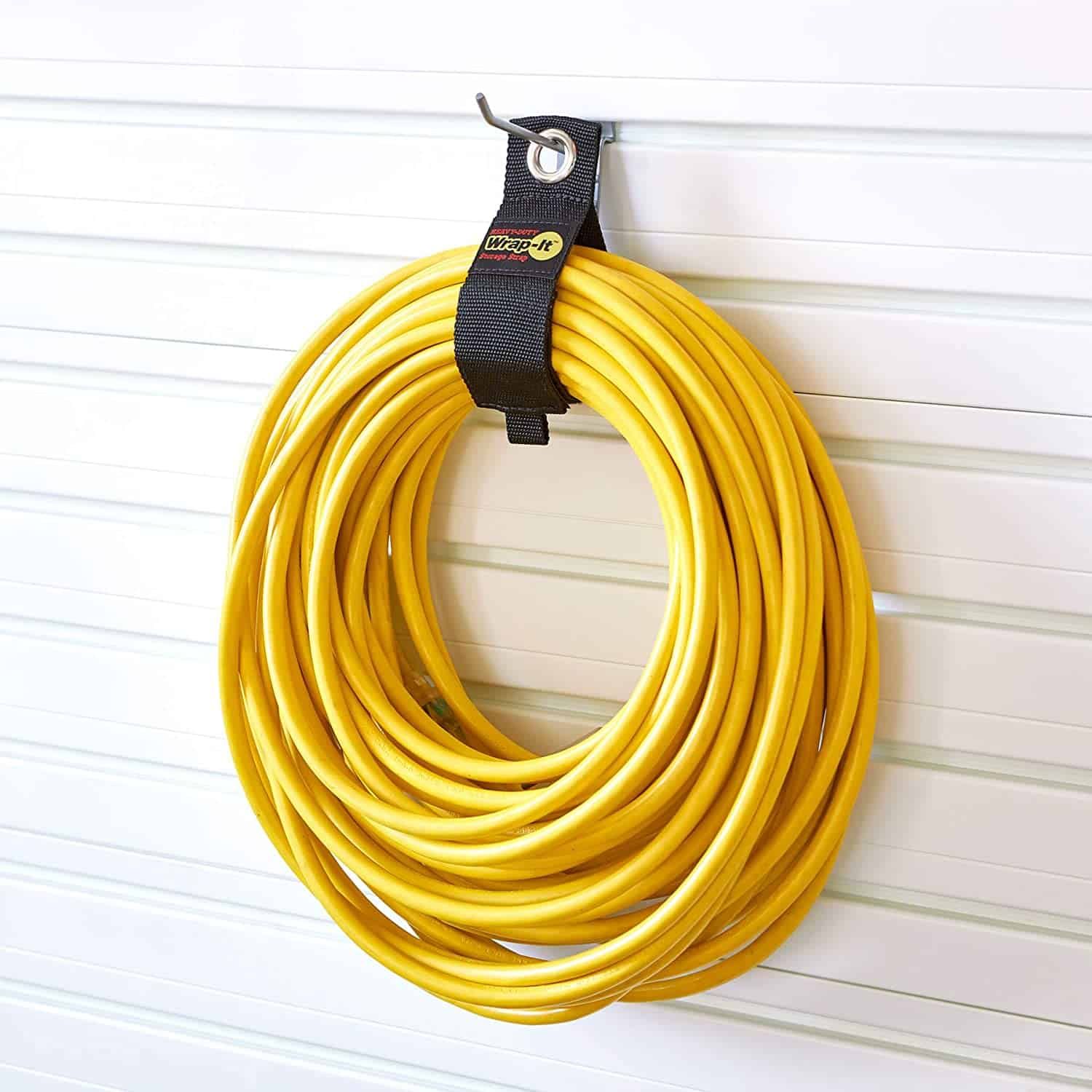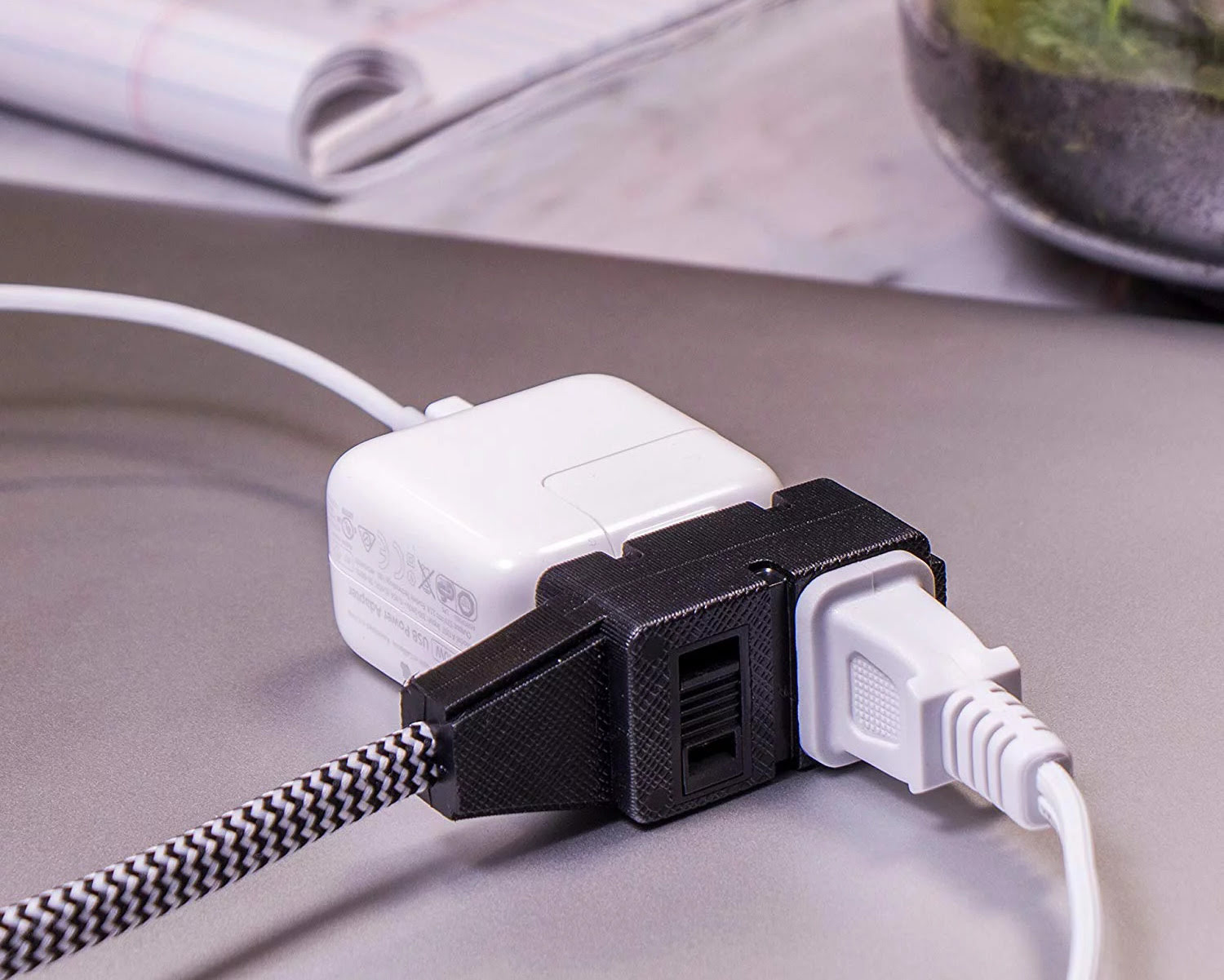

Articles
How To Hang An Extension Cord On The Wall
Modified: May 6, 2024
Learn how to hang an extension cord on the wall with these helpful articles. Find step-by-step guides and tips to keep your cords organized and safely secured.
(Many of the links in this article redirect to a specific reviewed product. Your purchase of these products through affiliate links helps to generate commission for Storables.com, at no extra cost. Learn more)
Introduction
Hanging extension cords on the wall is a practical and space-saving solution to keep your cords organized and easily accessible. Whether you’re looking to tidy up your garage, workshop, or office space, this simple DIY project can make a big difference in maintaining a neat and efficient environment.
By properly hanging your extension cords, you not only reduce the risk of tripping hazards but also prolong the lifespan of your cords by preventing them from getting tangled or damaged. In this article, we’ll provide you with a step-by-step guide on how to hang an extension cord on the wall, ensuring safety and convenience.
Before getting started, here’s a list of tools and materials you’ll need for this project:
Key Takeaways:
- Keep your space organized and safe by hanging extension cords on the wall. Follow the step-by-step guide to ensure convenience and prevent tripping hazards.
- Prioritize safety and aesthetics by properly preparing, installing, and checking the stability of your wall-hung extension cord. Create a neat and efficient environment.
Read more: How To Secure Extension Cord To Wall
Tools and Materials Needed
- Extension cord
- Wall anchors
- Screwdriver or drill
- Screws or hooks
- Level
Key Takeaways:
- Keep your space organized and safe by hanging extension cords on the wall. Follow the step-by-step guide to ensure convenience and prevent tripping hazards.
- Prioritize safety and aesthetics by properly preparing, installing, and checking the stability of your wall-hung extension cord. Create a neat and efficient environment.
Read more: How To Secure Extension Cord To Wall
Tools and Materials Needed
Before you begin hanging your extension cord on the wall, it’s important to gather the necessary tools and materials. Here’s a list of what you’ll need:
- Extension cord: Choose a sturdy and reliable extension cord that is long enough to reach the desired outlet. Make sure it is in good condition and free from any cuts or fraying.
- Wall anchors: If you’re planning to hang the extension cord on a drywall or other fragile surface, you may need wall anchors to provide additional support. Wall anchors come in various sizes, so choose the ones that are appropriate for the weight of your extension cord.
- Screwdriver or drill: Depending on the type of wall anchors and screws you’re using, you’ll need either a screwdriver or a drill to install them securely.
- Screws or hooks: The type of screws or hooks you choose will depend on the weight of your extension cord and the surface of the wall. Consider using sturdy hooks or screws that can hold the weight of the cord without causing any damage to the wall.
- Level: To ensure that your extension cord hangs straight and level, a level tool is essential. This will help you maintain a neat and professional look.
Having these tools and materials ready will make the process easier and more efficient. Now that you have everything you need, let’s move on to the step-by-step instructions on how to hang an extension cord on the wall.
Step 1: Preparation
Before you start hanging your extension cord on the wall, it’s important to prepare and gather all the necessary information. Here’s what you need to do:
- Choose the suitable location: Assess the area where you want to hang the extension cord. Consider a spot that is easily accessible and where the cord will not be in the way of foot traffic or any potential hazards. It’s important to select a location that is close to the desired outlet but doesn’t obstruct any doors or windows.
- Measure the length needed: Determine the length of the extension cord you’ll require to reach the outlet from the chosen location. This will help you avoid any unnecessary slack or strain on the cord once it’s hung on the wall.
- Ensure the cord is unplugged: Before proceeding with any installation, ensure that the extension cord is completely unplugged from the power source. This is a vital safety precaution to prevent any accidental electrical shocks or short circuits while working with the cord.
Taking these preparatory steps will help you plan and execute the hanging process effectively. By choosing the right location, measuring the correct length, and ensuring the cord is disconnected, you’ll be ready to move on to the next steps of installing the extension cord on the wall.
Step 2: Install Wall Anchors (if necessary)
Depending on the surface you’re working with, you may need to install wall anchors to provide additional support for hanging your extension cord. Follow these steps to install wall anchors:
- Determine if wall anchors are needed: Assess the type of wall you’re working with. If you’re hanging the extension cord on a fragile or hollow wall, such as drywall, paneling, or plaster, it’s recommended to use wall anchors. Wall anchors help distribute the weight of the cord evenly and prevent it from pulling out or damaging the wall.
- Use a screwdriver or drill to install wall anchors: Once you’ve determined that wall anchors are needed, use a screwdriver or drill to install them. Choose a drill bit that matches the size of the wall anchor and carefully drill a hole in the wall at the desired location. Insert the wall anchor into the hole and gently tap it with a hammer until it’s flush with the wall surface.
By installing wall anchors, you ensure that your extension cord is securely anchored to the wall, reducing the risk of it falling or pulling out under its own weight. This step is especially important if you plan to hang the cord on a fragile or uneven surface. Once you’ve installed the wall anchors, you’re ready to move on to the next step of attaching the screws or hooks.
Use adhesive hooks to hang the extension cord on the wall. Make sure the hooks are strong enough to hold the weight of the cord and position them at regular intervals to prevent sagging.
Read more: How To Hide Electrical Cord On Wall
Step 3: Attach Screws or Hooks
Now that you have prepared the location and installed wall anchors (if necessary), it’s time to attach the screws or hooks that will hold your extension cord. Follow these steps:
- Mark the position for the screws or hooks: Using a pencil or marker, mark the exact positions on the wall where you want to attach the screws or hooks. Make sure to align them with the wall anchors or choose sturdy areas of the wall to ensure a secure attachment.
- Use a screwdriver or drill to attach screws or hooks to the wall: Depending on the weight and length of your extension cord, choose the appropriate screws or hooks. Use a screwdriver or drill to carefully insert the screws or hooks into the marked positions on the wall. Make sure they are firmly attached and can support the weight of the cord without any risk of coming loose.
By properly attaching the screws or hooks, you create a stable base for your extension cord to hang from. This ensures that the cord is securely fastened to the wall, reducing the risk of it falling or becoming tangled. Once you have attached the screws or hooks, you’re ready to move on to the next step of hanging the extension cord.
Step 4: Hang the Extension Cord
Now that the screws or hooks are securely attached to the wall, you can proceed with hanging the extension cord. Follow these steps:
- Align the holes or hooks on the extension cord with the screws or hooks on the wall: Carefully align the holes or hooks on the extension cord with the corresponding screws or hooks on the wall. Ensure that they are properly aligned to prevent the cord from slipping or becoming loose once hung.
- Ensure the cord is securely hung on the wall: Once the holes or hooks are aligned, gently hang the extension cord on the screws or hooks on the wall. Make sure the cord is securely held in place and can support its own weight without sagging or pulling on the wall attachments.
By properly aligning and hanging the extension cord on the wall, you create a neat and organized setup that keeps the cord within easy reach while minimizing the risk of tripping hazards or damage. Ensure that the cord is securely hung to provide a stable and safe environment.
Step 5: Check for Stability
After hanging the extension cord on the wall, it’s important to check for stability to ensure that it will remain secure and in place. Follow these steps:
- Use a level to ensure the cord is straight and level: Place a level on the extension cord and check if it is perfectly horizontal or vertical, depending on how you hung it. Adjust the position of the cord if needed to ensure that it is straight and level. This will not only provide a visually appealing appearance but also maintain the integrity of the cord.
Checking for stability is essential to prevent the extension cord from slipping or sagging over time. When properly aligned and level, the cord will be more resistant to accidental tugs or snags, ensuring that it remains in the desired position. Use a level to make any necessary adjustments and ensure that the cord is straight and level.
By following these steps, you can successfully hang an extension cord on the wall, improving organization and safety in your space.
Conclusion
Hanging an extension cord on the wall is a simple and practical solution to keep cords organized and easily accessible. By following the step-by-step guide outlined in this article, you can efficiently hang your extension cord while ensuring safety and convenience.
Starting with the preparation phase, choose a suitable location for hanging the cord, measure the necessary length, and always ensure that the cord is unplugged before installation. If needed, install wall anchors to provide extra support and stability.
Next, attach the screws or hooks to the wall, making sure they are securely fastened. Align the holes or hooks on the extension cord and hang it onto the screws or hooks, ensuring that it is securely held in place.
Finally, check for stability using a level to ensure that the cord is straight and level. This step is crucial for aesthetics and maintaining the integrity of the cord.
By properly hanging your extension cord on the wall, you minimize the risk of tripping hazards and keep your space organized. Additionally, this method prolongs the lifespan of your cords by preventing tangles and damage.
Remember to make safety a priority when working with electrical cords. Always double-check that the cord is unplugged before installation and avoid overloading the cord with too many appliances.
Now that you have the knowledge and steps to hang an extension cord on the wall, you can transform your space into a more organized and efficient environment.
Now that you've mastered hanging extension cords, why not tidy up even more? Our guide on cord management offers ingenious solutions for electrical clutter. Fancy tackling larger projects? Our DIY home improvement article provides easy steps to transform any space. For those who love neatness, our review on home organization features the best fabric storage cubes to sort all your essentials effectively.
Frequently Asked Questions about How To Hang An Extension Cord On The Wall
Was this page helpful?
At Storables.com, we guarantee accurate and reliable information. Our content, validated by Expert Board Contributors, is crafted following stringent Editorial Policies. We're committed to providing you with well-researched, expert-backed insights for all your informational needs.















0 thoughts on “How To Hang An Extension Cord On The Wall”